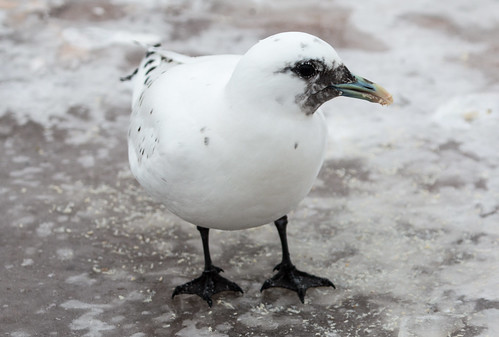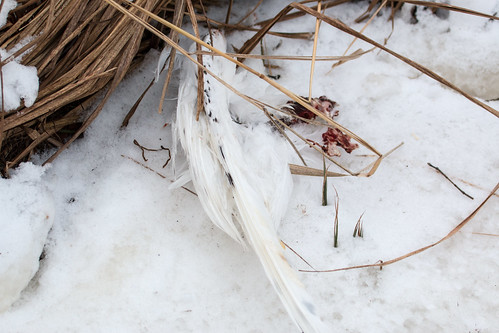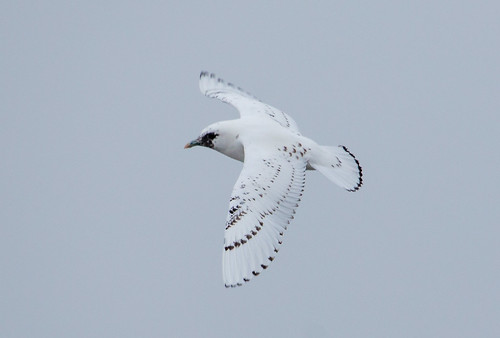 |
It’s sad that the bird died, and also bewildering. Ivory
Gull individuals do appear now and then in the Lower 48, but it’s rare enough that
when one appeared last year in southern Illinois, birders from all over America
made the journey to see it. The American Birding Association’s Facebook page
kept birders up to date on the Duluth bird’s appearances, and again, many
people made the trek to Duluth to see it.
No one knows why individuals of some species wander
occasionally. Ivory Gulls have long been known to be subject to this periodic
wandering, but whether the individual vagrants leave their natural range because
they’re in some distress or for another reason is beyond our ken. Thanks to the
scientists putting transmitters on Snowy Owls in Project SNOWstorm, we’re in
the beginning stages of teasing out some of the mysteries involved in that
species’ winter movements. That work, in combination with the many insights
raptor rehabilitators bring to the table in handling an even larger number of
individuals during some Snowy Owl invasion cycles, is getting answers to some of our
questions, even as it’s inspiring even more questions.
Unfortunately, a Project SNOWstorm approach would be impossible with Ivory Gulls because it’s so rare and unpredictable
that an individual Ivory Gull moves south, and when one does, it usually remains only a day or two,
making it unlikely that a bander involved in an Ivory Gull project could even
get on the scene while the bird is still present. And then, even if an experienced Ivory Gull bander were
present, banders haven’t developed as many straightforward protocols to trap gulls
in winter—most research projects on gulls are done on their breeding grounds.
Because no one captured it, we’ll never know why the
Duluth Ivory Gull was in distress. One Ivory Gull that drew hundreds of birders to West Point Lake in Georgia in 2010 died of aspergillosis—a common and
widespread fungal infection of the lungs. Did that bird leave its natural range because it
was already infected, or because it already had a compromised immunity that made it more vulnerable than Ivory Gulls that stay in the
Arctic? We may never know the answer to that.
In the case of such exceptional birds, every
single data point is invaluable. But most birds in distress die either directly
from predators or at nighttime, making it very unlikely that their carcasses can be
retrieved for necropsy. The mangled Ivory Gull carcass I retrieved in Superior on January 6 was too far gone to provide any information about the bird’s physical condition
before death.
Scientists at the Field Museum have retrieved both a louse and a
mite from it--critters that were as dead and frozen as the gull. These permanent parasites live their entire life cycle on their host, and identifying them reveals important information to scientists in disciplines from taxonomy to animal behavior. So even limited amounts of salvageable body parts can contribute to our
knowledge of various species.
 |
| Louse from the Superior Ivory Gull; photo taken under the microscope at the Field Museum of Natural History via Nathan Goldberg |
Retrieving and providing professional rehabilitation for out
of range birds if they are clearly sick or injured seems to me a wise course, both out of compassion for the bird, just in case it can be rehabilitated
for release, and to augment the woefully tiny body of information we have about
these birds. Our lack of physical data about Duluth's otherwise wonderfully well
documented Ivory Gull lends its already sad death an additional layer of tragedy.


